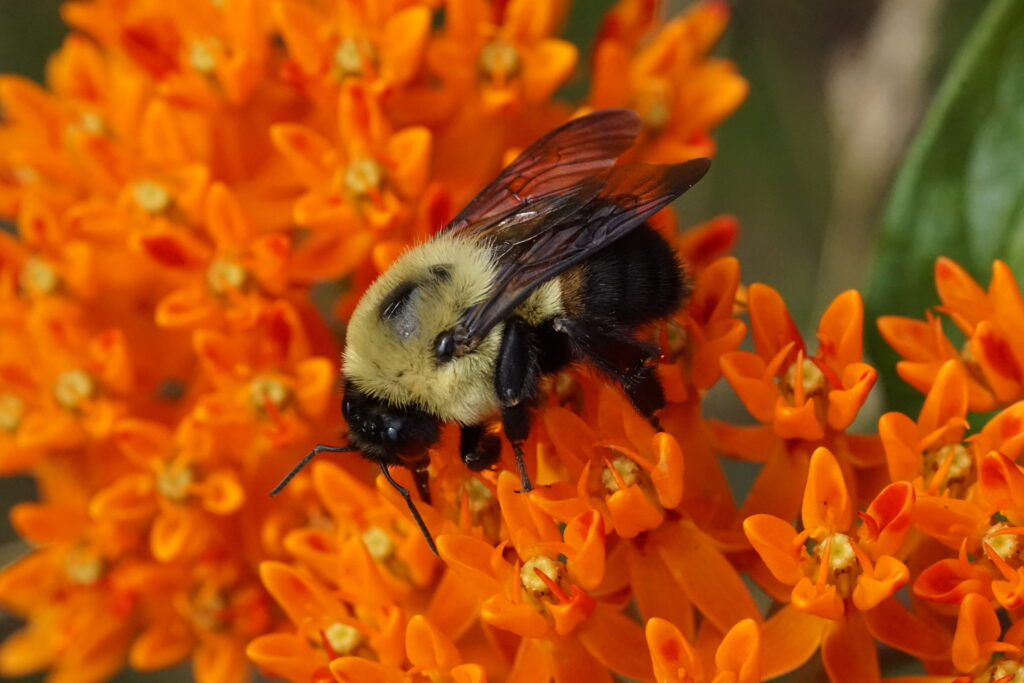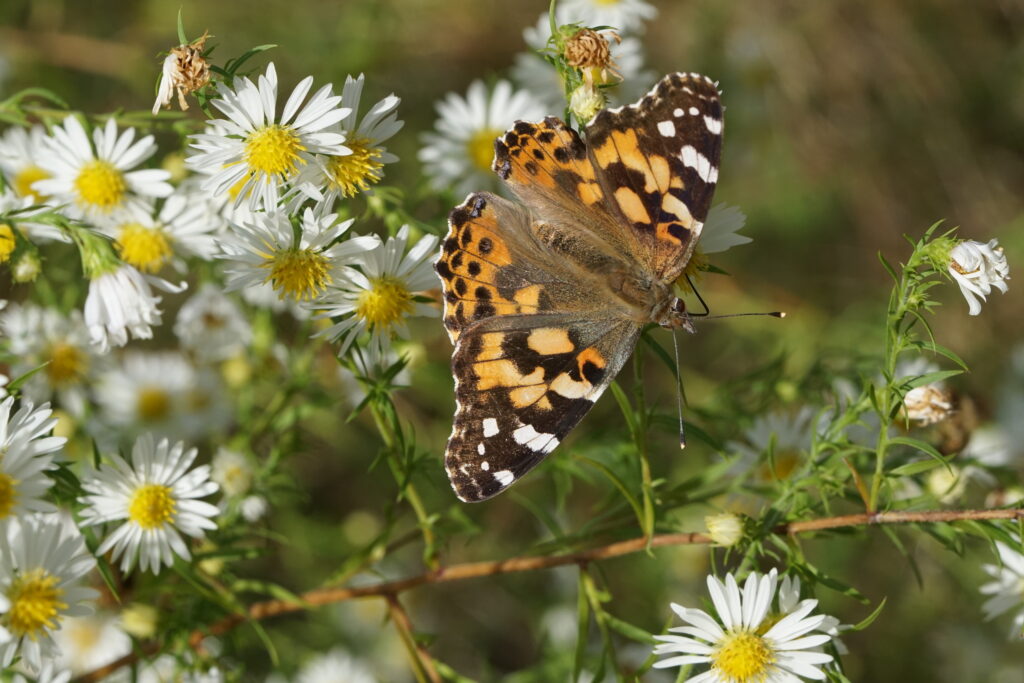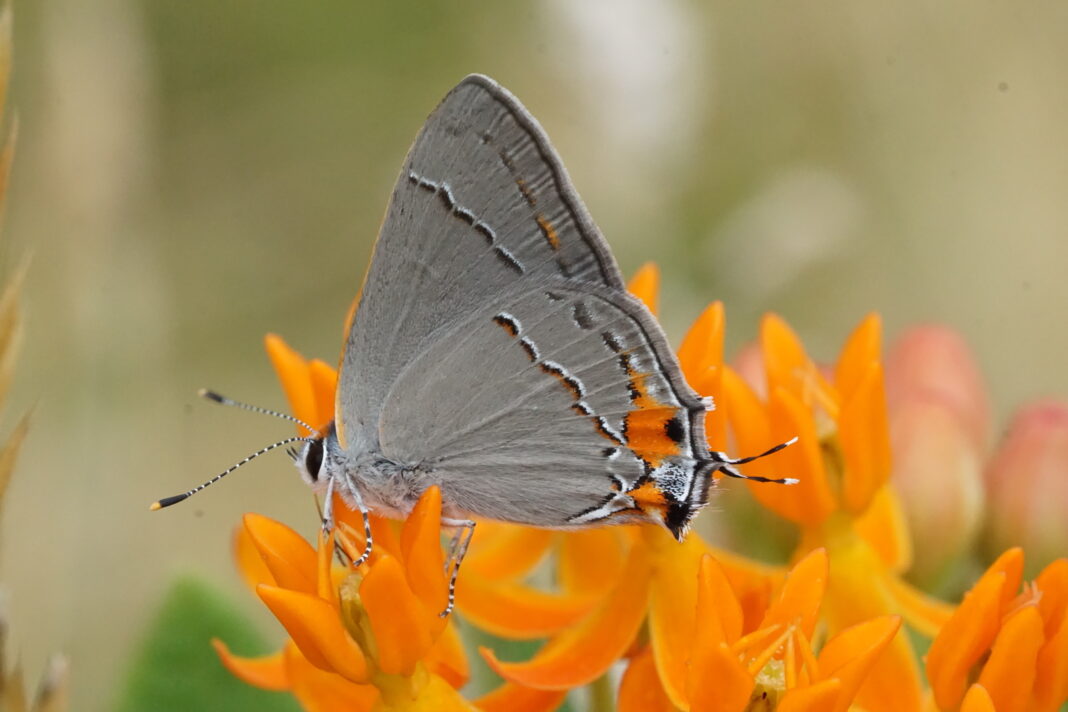My journey from unsuccessful lawn to wildflower meadow.
I tried. I really did.
We moved to the Vineyard in August 1997, buying our first-ever house, a modest Cape-style home on a flat, scant quarter-acre in Oak Bluffs. Having grown up in the 1960s and 1970s in the suburbs outside of Boston, I moved in fully expecting to shoulder the burden of conventional lawn care. In fact, no other option even occurred to me: A lush, green lawn fringed by colorful flower beds was the obvious goal. Right?
Accordingly, I watered, weeded, fertilized, dug, planted, pruned, divided, mulched, cultivated, edged, herbicided, and then watered some more. Each summer, I cut additions to the flower borders; each spring, I renewed the steadily expanding roster of ornamental beds and replaced plants that had succumbed to the Vineyard’s erratic winter weather. I mowed the lawn, first with a human-powered, reel-style mower, then, as our finances grew slightly less precarious, with a fossil-fueled, rotary one.
The land, however, had its own ideas. The topsoil had been stripped from most of the lot for use at another project. The exposed subsoil, a dismal mix of sand and clay, was soggy in wet seasons and baked to imperviousness in dry ones. The hydroseeded lawn devolved into scattered, dejected clumps of grass, with taprooted weeds cheerfully monopolizing the bare soil between tufts.
I was onto something. Butterflies visited the coreopsis flowers; later in the summer, goldfinches perched precariously on the flower stalks, winkling coreopsis seeds out of the dried heads.
Gradually, it dawned on me that I was engaged in an exercise of utter futility. The work I put in produced no permanent improvement. The lawn remained lumpy, the exotic ornamentals continued to languish, the non-native weeds continued to flourish. Each “improvement” I attempted came with an ongoing burden of maintenance; the more I worked, the farther behind I fell.


Ultimately, it was the plants themselves that saved me. A coreopsis in one of my floral borders produced viable seeds, some of which landed and germinated amid the scruffy tufts of grass. I mowed around these volunteers, letting them flower and disperse more seed. In a few years, coreopsis had spread throughout our front yard, and during its bloom period in June and early July, it produced a blanket of yellow blossoms.
I was onto something. Butterflies visited the coreopsis flowers; later in the summer, goldfinches perched precariously on the flower stalks, winkling coreopsis seeds out of the dried heads. Here was a plant that advertised its suitability to our yard’s challenging conditions: beautiful when in bloom, supportive of wildlife through the summer, and best of all, demanding no effort from me.
Thus a new set of principles emerged. Instead of fighting the realities of soil and climate in an effort to grow plants that didn’t want to be there, I tolerated and even encouraged plants that chose our yard on their own. And I sought to add species, especially (though not only) ones native to the Vineyard that seemed likely to feel at home. Little bluestem, a characteristic grass of open Island habitats, volunteered for duty. I purchased a few big bluestem plants, which loved where I put them so much that they expanded into a dense clone fifteen feet across. Two species of goldenrod drifted in, along with three or four types of aster, providing bursts of late-season color. The flat seeds of butterfly-weed, snitched from wild plants and unceremoniously spread among the bunchgrass, grew up and produced masses of bright orange flowers. A native prickly pear cactus hugs the south side of our foundation, attracting bees to its showy yellow flowers every June. Highbush blueberries buzz with bees in spring and then fatten our local catbirds with berries in July.


As our yard steadily evolved from unsuccessful lawn into successful meadow, two trajectories of personal change worked to encourage my shift in landscaping goals and aesthetics. The first of these was a steady broadening of my natural history interests. Arriving on the Vineyard in 1997, I was an avid observer of birds, butterflies, and dragonflies — and that was about it. In large measure, those narrow interests simply reflected the times. The nascent internet afforded few resources to a naturalist, and only the most conspicuous and easily observed groups of organisms were covered by existing print field guides. So unless you were game for serious scientific study — collecting specimens, using microscopes, identifying with scientific keys — there were relatively few groups you could expect to teach yourself about successfully.
The second personal shift was one that many others on the Vineyard have experienced to some degree: a growing awareness that our individual choices affect the finite and sometimes surprisingly delicate natural resources of the Island we inhabit.
But the quarter-century since then has been one of astonishing, ever-accelerating growth in the study of nature. Digital photography has made documenting wildlife easy and, by extension, has encouraged the production of a host of excellent, specialized identification guides. Web platforms like BugGuide.net and iNaturalist.org grew up to link amateurs with experts from literally all over the world. Even the vast morass of Facebook features countless islands of natural history knowledge, groups in which naturalists share photos and information and help each other learn. I’m anything but an early adopter when it comes to technology. But my love of nature pushed me to embrace these new resources, and the newly accessible wealth of information, in turn, broadened my love of nature.
The second personal shift was one that many others on the Vineyard have experienced to some degree: a growing awareness that our individual choices affect the finite and sometimes surprisingly delicate natural resources of the Island we inhabit. Steadily more interested in encouraging native plants and animals and less inclined to add nutrients or pesticides to the local ecosystem, I came to view my “meadowization” process as a way to advance both goals at once. With apologies to my long-suffering neighbors, I didn’t much care about how our yard looked; or, rather, I replaced the arbitrary aesthetic of a groomed lawn with a different set of values favoring minimized impact and high biodiversity.




Some of that biodiversity verges on the bizarre. The fly genus Opomyza, for example — a member of the small and obscure family Opomyzidae, or “grass flies” — turns up annually in the big bluestem patch I mentioned. Why? Well, Opomyza larvae are stem miners, spending their childhood developing inside the stems of grasses. The thick, hollow stalks of my big bluestem, which grows six feet tall, evidently offer congenial conditions for Opomyza larvae, and this fly, which appears to be scarce on the Vineyard, somehow sniffed out this new housing stock.
Less strange but much noisier are my Orthoptera — grasshoppers, crickets, and katydids. About 20 species in this interesting order, out of the 67 species (current and historical) known from Martha’s Vineyard, have turned up in our yard. A dozen of those breed annually, laying their eggs in plant stems or in the ground and feeding on the yard’s diverse plant life. On a late summer night, as many as a half-dozen cricket and katydid species may be heard calling at once.
Some of my yard discoveries have been fairly significant. Bees, for example, are a fairly well-studied group on the Vineyard; a major survey in 2010 and 2011 documented 182 species (plus four more found in historical insect collections) on the Island. It’s not easy to add species to such an exhaustive checklist, but subsequent surveys have increased the list by eleven. Five — almost half — of those additions were found and documented in our yard, the result of a season-long parade of native flowers combined with my frequent perusal of those blooms. Melissodes subillatus, to take one of those species, can manage by feeding on and collecting pollen from a wide range of flowers. But given a choice, what it really likes are coreopsis flowers, and the rafts of coreopsis in our front yard are the only place where this bee has been found on the Vineyard. So the hardy plant that launched my meadowization process turns out to reliably support a bee that appears to be uncommon or rare on the Island.


These days, my yard work is minimal. I mow trails through the tall grasses and wildflowers and also mow small portions of our yard so we have open space for outdoor projects. The best time for an annual mowing is during a narrow window in early spring, before much plant growth has started but when it’s warm enough so that insects are mobile and able to get out of the way. In practice, one is likely to mow when it’s convenient — but at least annually or every other year, to avoid a buildup of dead plant material that can block seeds from reaching the soil and prevent new germination. Another good idea is to mow only part of the meadow at a time so there is always a refuge. I divide plants into three classes. Some species, which I deem useless or invasive, I actively discourage, uprooting them or cutting flowers off when the mood for management strikes me. Others, which I want more of, I encourage, collecting and spreading their seed. Everything else is on its own, persisting or fading away depending on its ability to handle the yard’s difficult soil and full sun and the competition from other species. In place of laboring like Sisyphus to maintain a sterile monoculture of non-native grass, I spend my time studying the wealth of biological diversity supported by my ersatz and endlessly interesting meadow.

It's not the outcome I expected when we washed ashore back in 1997 with a vision of the American lawn guiding my land management. But like any aesthetic convention, lawn worship is essentially arbitrary, the result of familiarity (I struggled, there, to avoid writing “brainwashing”) rather than any inherent value. And the huge industry that has evolved to maintain this peculiar form of land use (a quick Google search puts the annual value of the landscaping industry at roughly $130 billion) looks to me, at best, like a missed opportunity. Imagine that amount of money and expertise deployed to create habitat instead of to maintain millions of acres of biological desert! There’s beauty in diversity and in the infinitely complicated web of interactions that make up the natural world. We have the power to encourage and enjoy that beauty if we choose. Why settle for sod?
Interested in landscaping for wildlife habitat? Natural Neighbors, a program run by BiodiversityWorks, helps landowners plan and carry out nature-friendly improvements.


